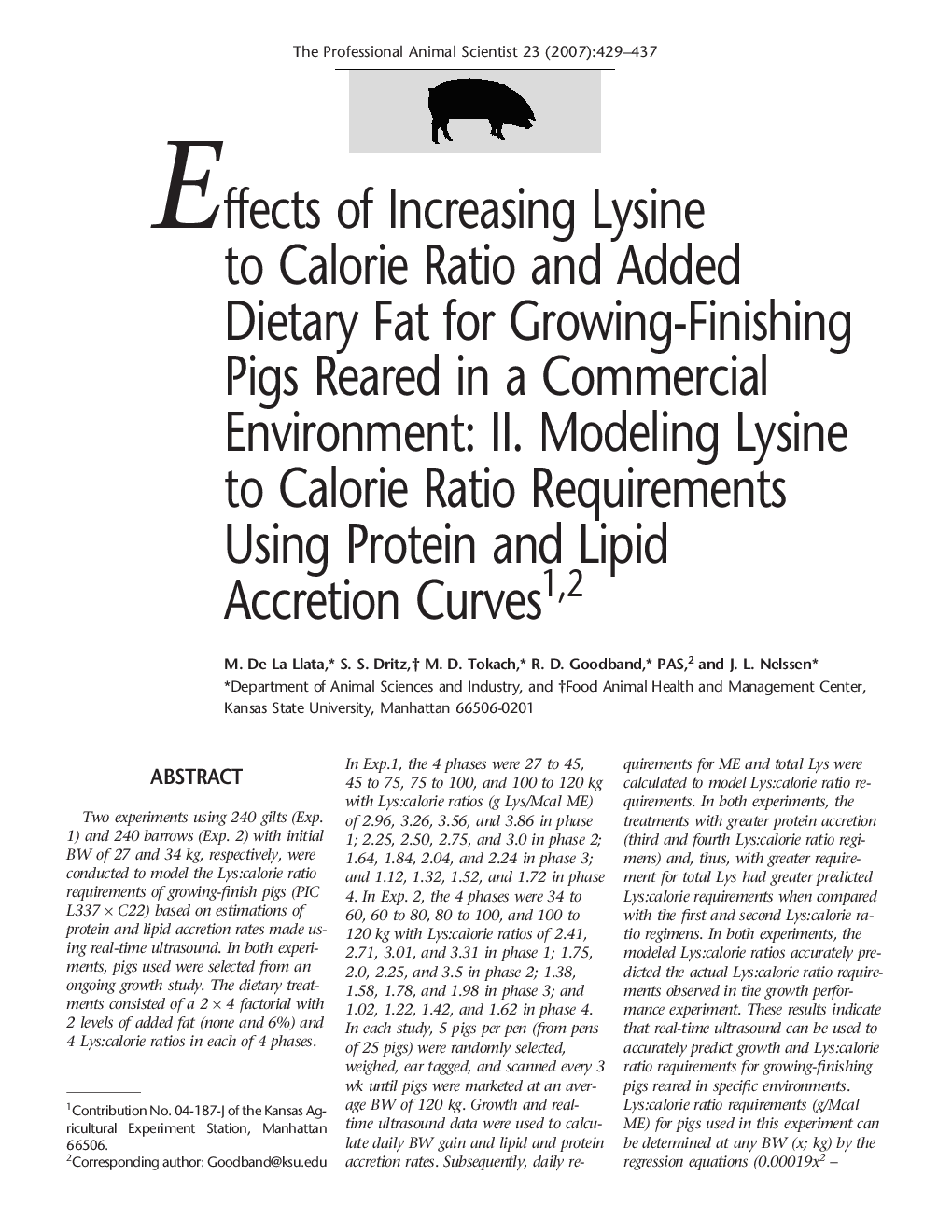| Article ID | Journal | Published Year | Pages | File Type |
|---|---|---|---|---|
| 2454641 | The Professional Animal Scientist | 2007 | 9 Pages |
Abstract
Two experiments using 240 gilts (Exp. 1) and 240 barrows (Exp. 2) with initial BW of 27 and 34 kg, respectively, were conducted to model the Lys:calorie ratio requirements of growing-finish pigs (PIC L337 Ã C22) based on estimations of protein and lipid accretion rates made using real-time ultrasound. In both experiments, pigs used were selected from an ongoing growth study. The dietary treatments consisted of a 2 Ã 4 factorial with 2 levels of added fat (none and 6%) and 4 Lys:calorie ratios in each of 4 phases. In Exp.1, the 4 phases were 27 to 45, 45 to 75, 75 to 100, and 100 to 120Â kg with Lys:calorie ratios (g Lys/Mcal ME) of 2.96, 3.26, 3.56, and 3.86 in phase 1; 2.25, 2.50, 2.75, and 3.0 in phase 2; 1.64, 1.84, 2.04, and 2.24 in phase 3; and 1.12, 1.32, 1.52, and 1.72 in phase 4. In Exp. 2, the 4 phases were 34 to 60, 60 to 80, 80 to 100, and 100 to 120Â kg with Lys:calorie ratios of 2.41, 2.71, 3.01, and 3.31 in phase 1; 1.75, 2.0, 2.25, and 3.5 in phase 2; 1.38, 1.58, 1.78, and 1.98 in phase 3; and 1.02, 1.22, 1.42, and 1.62 in phase 4. In each study, 5 pigs per pen (from pens of 25 pigs) were randomly selected, weighed, ear tagged, and scanned every 3 wk until pigs were marketed at an average BW of 120Â kg. Growth and real-time ultrasound data were used to calculate daily BW gain and lipid and protein accretion rates. Subsequently, daily requirements for ME and total Lys were calculated to model Lys:calorie ratio requirements. In both experiments, the treatments with greater protein accretion (third and fourth Lys:calorie ratio regimens) and, thus, with greater requirement for total Lys had greater predicted Lys:calorie requirements when compared with the first and second Lys:calorie ratio regimens. In both experiments, the modeled Lys:calorie ratios accurately predicted the actual Lys:calorie ratio requirements observed in the growth performance experiment. These results indicate that real-time ultrasound can be used to accurately predict growth and Lys:calorie ratio requirements for growing-finishing pigs reared in specific environments. Lys:calorie ratio requirements (g/Mcal ME) for pigs used in this experiment can be determined at any BW (x; kg) by the regression equations (0.00019x2 - 0.05635x + 5.499) for gilts, and (0.000049x2 - 0.037319x + 4.929) for barrows.
Related Topics
Life Sciences
Agricultural and Biological Sciences
Animal Science and Zoology
Authors
M. De La Llata, S.S. Dritz, M.D. Tokach, R.D. PAS, J.L. Nelssen,
